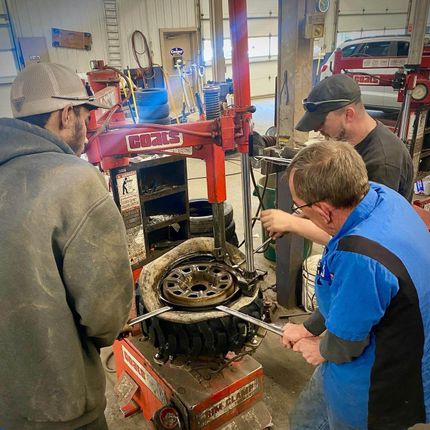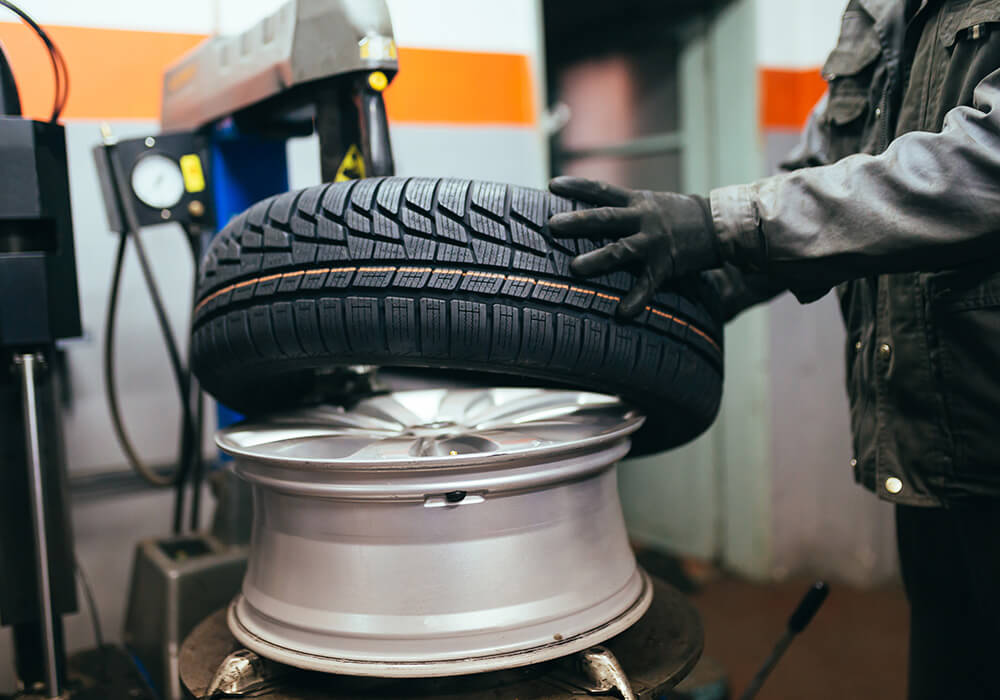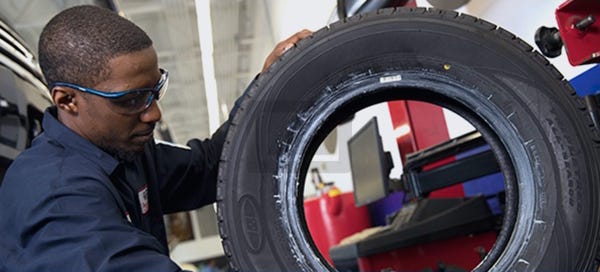Morris Tires: Your Partner for Expert GMC Tires Service
Morris Tires: Your Partner for Expert GMC Tires Service
Blog Article
Tire Service: The Influence of Weather
When it pertains to making certain optimal performance and safety and security when traveling, comprehending the influence of weather on tire service is crucial. From scorching heat to icy roadways, each climate element can substantially affect tire functionality and general driving experience. By delving right into the results of differing climate condition on tires, drivers can get important understandings that may improve their car's performance and long life. In this discussion, we will certainly discover the intricate partnership in between climate condition and tire service, dropping light on the significance of weather-specific tire maintenance methods and factors to consider.
Warmth and Tire Performance
When subjected to high temperature levels, tires experience modifications in efficiency that can significantly affect automobile safety and handling. The warmth created from extended driving or warm weather condition problems triggers the tire rubber to soften, leading to minimized tread life and raised wear.

Cold Weather Condition Effects
Cold weather problems can have a substantial influence on tire performance and safety. As temperature levels drop, tire rubber can solidify, resulting in lowered grip on icy or snow-covered roadways. In cool weather condition, tires might also lose air pressure much more swiftly, which can influence handling and gas effectiveness. In addition, cool temperatures can create tire sidewalls to stiffen, boosting the threat of damages from pockets or other roadway risks.
To minimize the effects of chilly climate on tires, it is crucial to routinely check tire pressure and inflate them to the manufacturer's suggested degrees. Making use of winter or all-season tires developed for chilly climate problems can additionally boost traction and grip on icy or snowy roadways. Proper tire maintenance, including normal examinations for wear and damage, becomes a lot more critical during colder months to make sure ideal performance and safety and security.
Rainy Issues Impact
Throughout rainy problems, tire performance and safety and security can be substantially affected by the wet roadway surfaces and minimized visibility. The tread pattern of tires plays a crucial function in keeping traction on wet roads. Tires with worn-out footsteps are extra vulnerable to hydroplaning, where a layer of water constructs up in between the tire and the roadway surface area, causing loss of grip. To battle this, vehicle drivers should frequently inspect their tires for appropriate walk depth and take into consideration purchasing tires especially made for wet problems.
Additionally, stormy weather can additionally lower exposure, making it testing for chauffeurs to see the roadway ahead plainly (GMC Tire Service). In such problems, it is crucial to adjust driving rates appropriately and preserve a risk-free following distance to enable sudden stops. Properly filled with air tires can likewise help in preserving my link control on damp roads by supplying better handling and grip
Snow and Tire Safety
Snow-covered roads present one-of-a-kind challenges for motorists, emphasizing the relevance of proper tire selection and maintenance. When driving in snowy conditions, having the right tires can make a considerable difference in safety and security and efficiency. Winter months tires are designed with special rubber substances and walk patterns to provide much better traction on snow and ice contrasted to all-season tires. The much deeper treads and sipes of winter months tires assist hold the road better, minimizing the danger of gliding and sliding.

It is crucial to comply with manufacturer instructions when using and setting up tire chains to stop damage to the tires and car. By selecting the best tires, keeping proper rising cost of living, and thinking about additional grip help like tire chains, drivers can boost their safety when navigating snow-covered roads.
Weather-Related Tire Upkeep
When confronted with various weather, appropriate tire maintenance comes to be a vital aspect of vehicle safety and security and efficiency. Weather-related tire upkeep includes a series of practices focused on making certain optimum tire function and longevity in different climate scenarios. One essential facet of weather-related tire maintenance is tire pressure law. Varying temperatures can create tire stress to vary, influencing grip and fuel performance. Routinely adjusting and checking tire pressure according to manufacturer recommendations is important for secure driving in changing climate conditions. Additionally, tire walk depth plays a substantial role in dealing with various weather condition components. Tires with appropriate walk deepness offer much better hold on damp or icy roads, decreasing the threat of skidding or hydroplaning. When step wear reaches a certain visit our website deepness is essential for maintaining grip and stability in unfavorable climate, examining tire step regularly and replacing tires. By prioritizing weather-related tire maintenance, vehicle drivers can enhance safety, boost lorry performance, and extend the life expectancy of their tires.
Conclusion
Finally, weather condition conditions have a significant effect on tire efficiency and security. From warmth influencing tire pressure and put on to winter minimizing traction, it is vital to consider the weather condition when maintaining and making use of tires. Wet conditions can lower grip and lead to hydroplaning, while snow can enhance the risk of mishaps if tires are not effectively outfitted. Weather-related tire maintenance is crucial in making sure optimal performance and safety on the roadways.
In this discussion, we will explore the intricate connection between weather condition conditions and tire solution, shedding light on the value of weather-specific tire maintenance techniques and considerations.

Report this page